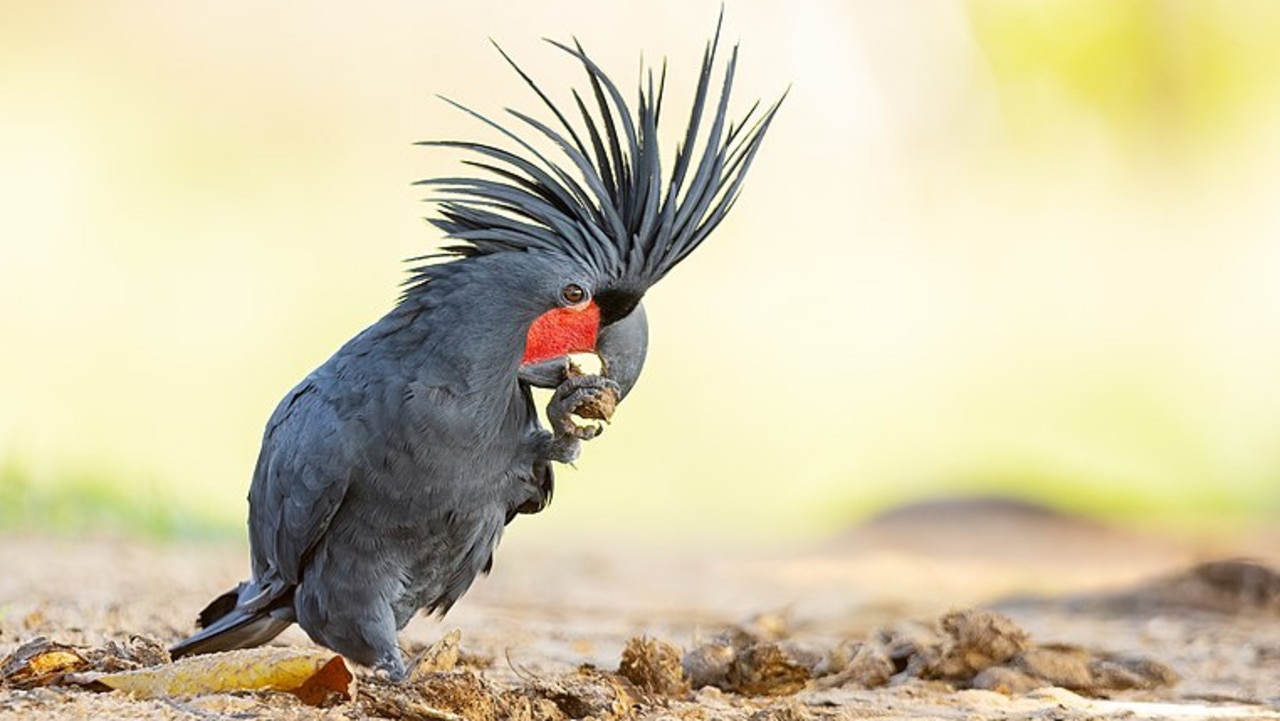Queensland’s palm cockatoo on global Red List
The distinctive dark cockatoo, the most iconic bird on the Cape York peninsula, is under threat.
An iconic Aussie bird is close to becoming extinct, according to an international list providing global extinction risk status of animal and plant species.
Queensland’s palm cockatoo has been moved up from “least concern” to “near threatened” status by the IUCN (International Union for Conservation of Nature) Red List.
The organisation updated the status of several Aussie species on Tuesday, which included the palm cockatoo as the most high profile local species to be added to the Red List.
The Australian Conservation Foundation’s nature campaigner Peta Bulling provided an insight as to why the red and black bird is becoming extinct.
“Palm cockatoos can live for 90 years, they mate for life and they are world famous for using sticks to drum on the outside of nesting hollows,” Ms Bulling said.
“Like so many other Australian birds and possums, palm cockatoos need hollows in mature trees for their nests. Their habitat is under threat from climate change fuelled extreme weather events like fires and cyclones, as well as mining.”



“We are putting far too many species on the road to extinction – mostly because we keep destroying their homes for agriculture, logging, mining and housing estates,” she said.
The palm cockatoo is known for its massive curved beak and crafting their own drum sticks, putting on a so-called “drumming display” to attract potential mates or mark their territory.
The IUCN assessed 157,190 species across the world, declaring nearly a third (44,016) as being now at risk of going extinct, which is a significant increase from last years figures.
Nearly 2000 Australian animals are now on the list, including the Tapping nursery frog which is “one of many Australian frogs that has been added or uplisted in this update to the Red List.”
“The Tapping nursery frog, which is found on a few tall mountains in Queensland’s Wet Tropics, is one of several species that is highly vulnerable to climate change,” Ms Bulling explained.
“Droughts and heatwaves affect the reproductive success of the Tapping nursery frog, because it needs moist soil and leaf litter for its eggs to develop,” she said, adding that Australia has a “terrible record” when it comes to protecting unique species.

Last year Environment Minister Tanya Plibersek made the “Towards Zero Extinctions” pledge, which adopted a target of preventing any new extinctions of plants and animals as part of the new federal Threatened Species Action Plan, which focuses on only 110 of our 1900 threatened species.
When an animal is added to the international Red List, efforts are made to attract more protection efforts, such as building up an animal profile.
In 2021, Australia’s bogong moth was declared endangered by the IUCN and has since proven to shown some signs of recovery.
“The government must urgently strengthen our environment laws so they tackle the big drivers of extinction – deforestation and climate change,” Ms Bulling urged.
“Extinction is a choice. We need to stop destroying wildlife habitat if coming generations are going to be able to appreciate Australian birds and animals like we can.”





